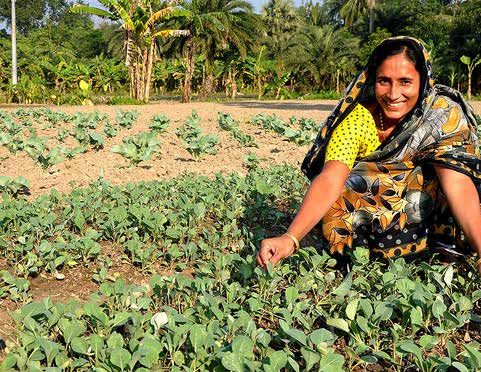The effect of farmer nutrition schools on household food production and women's dietary diversity in Bangladesh
Abstract
Introduction: The nutrition situation in Bangladesh has improved substantially over the last decade. Nevertheless, dietary diversity of women of reproductive age continues to be low. In addition, global evidence on the effect of nutrition-sensitive agriculture interventions on dietary diversity is still developing. The Strengthening Partnerships, Results, and Innovations in Nutrition Globally (SPRING) project implemented a Farmer Nutrition School (FNS) intervention in two divisions (regions) in Bangladesh from 2012 to 2016. FNS targeted pregnant women and mothers with children less than two years of age (PLW) in the lowest two wealth quintiles. FNS was based on three well-established, evidence-based strategies--the essential nutrition and hygiene actions, the homestead food production approach, and farmer field schools.
Methods: This study aims to assess the effect of SPRING’s FNS program on women’s dietary diversity, measured by a women’s dietary diversity score (WDDS) based on the nine-item FANTA/FAO scale. We followed up one cohort of women who participated in FNS beginning in November 2014. We undertook a two-stage sampling design to identify these women. First, forty-four FNS groups were randomly selected from the 2,560 FNS that were planned to be implemented during 2014-15. Second, 10 women were randomly drawn from each of the 44 FNS groups, which were scattered across 38 upazilas (sub-districts), 19 each in Barisal and Khulna Divisions. Sample size was calculated to detect a 0.25 effect size in the WDDS with a power of 80% and confidence interval of 95%. Three phases of surveys were conducted: before the FNS began (Phase 1-P1, November 2014), immediately after the completion of the FNS (Phase 2-P2, July - August, 2015), and one year after (Phase 3-P3, July 2016). A total of 386 women completed all three surveys. Data analyses included descriptive statistics and t-tests. Statistical significance is tested by the adjusted Wald test with a 95% confidence interval.
Results: The percentage of FNS participants’ households that produced vegetables, poultry and fish significantly increased between P1 and P2, from 43% to 95% (p<.05), from 75% to 87% (p<.05), and from 48% to 67% (p<.05), respectively. The increases were more or less sustained at P3, at 86%, 92%, and 63%, respectively. Additionally, the mean numbers of vegetable types grown and of chickens reared increased significantly from P1 to P2 (p<.05) and were sustained at P3, from 1.3 to 4.9 to 4.6, and from 5.3 to 7.9 to 8.4, respectively. The mean WDDS significantly increased from 3.9 to 6.0 between P1 and P2 (p<.05), and was sustained at 5.6 at P3. The proportion of women who reported consuming items promoted in FNS, such as eggs, vitamin-A rich fruits and vegetables, and flesh foods also increased significantly.
Conclusions: The FNS approach, which supports agriculture interventions with an explicit nutrition objective, generated rapid and sustained improvement in food production and dietary quality. This study suggests that a program design based on local contexts with moderate management support and minimum material inputs can have a powerful effect on women’s dietary diversity within a short time. Furthermore, with community involvement and ownership in a context like rural Bangladesh, the improvements can be sustained, at least for one year. While this cohort study did not have a built-in control group, the magnitude of the increases in production outcomes and WDDS among FNS participants, coupled with much smaller or no increases at the population level over even longer time periods, suggested that these results were probably largely due to the SPRING FNS intervention.

Authors retain all copyrights. In making a submission to World Nutrition, they are certifying that all material is theirs except quotations, as indicated, and that they have obtained permission for any photos, tables, or graphics taken from other publications or websites.




